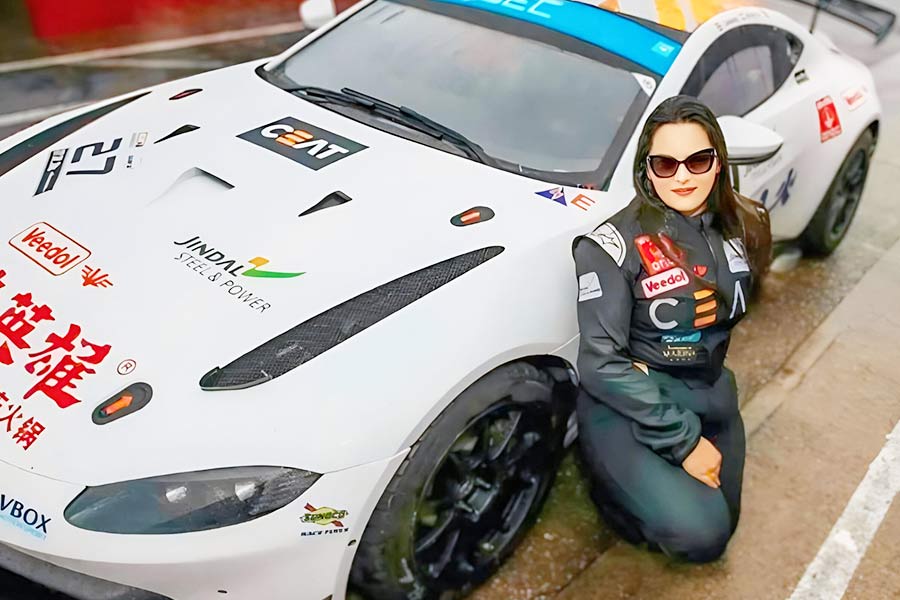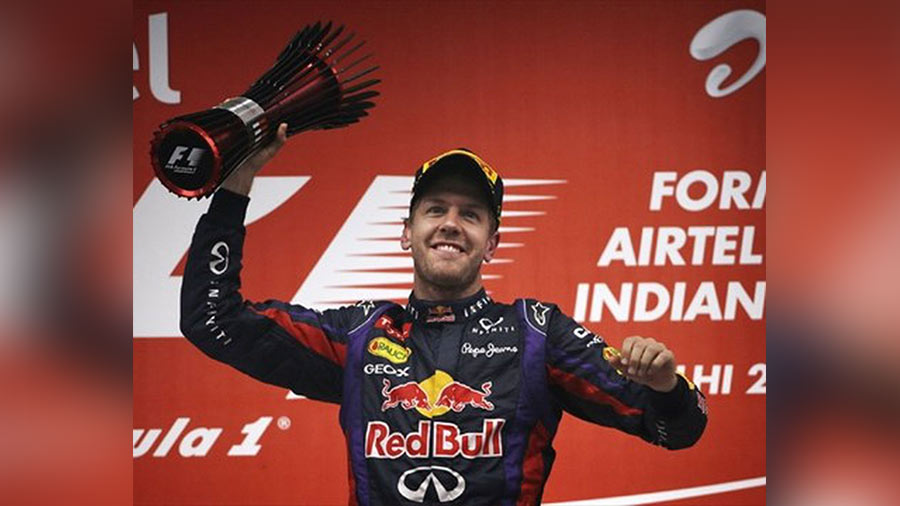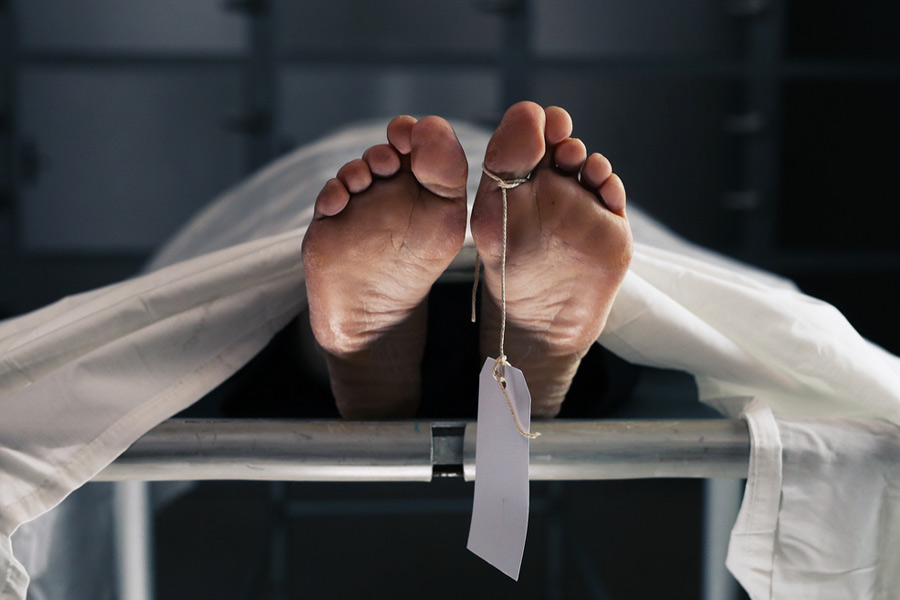When you think of India in motorsports, the general knowledge rarely goes beyond names like Narain Karthikeyan or Karun Chandhok, let alone to any woman. But there is one racer from Jammu and Kashmir changing this narrative. Meet Humaira Mushtaq, India’s first ever representative at the British Endurance Racing Championship.
Overcoming challenges and initial setbacks, at just 25 years old, Humaira has already made it to the endurance, GT2, F2 and F3 cars, and she isn’t slowing down any time soon!
Connecting over a call from Dubai, where she is currently training for this year’s British Endurance Championship, Humaira opened up about her motorracing journey.
‘I was always the only girl and I would win’
Growing up in a traditional setting in Jammu and Kashmir, Humaira like many little girls was only gifted dolls, until one day her father brought home a new toy. “My dad got me a toy car when I was three years old, and I think that was the happiest I’ve ever been in my life. I drove it around the house,” said the racer, who is also a dentist by profession.
Her father made a track with tyre walls in the backyard of their home, and Humaira stepped into a custom-made go-kart at the age of four, and since then her life has revolved around cars. “I started competing in go karting at the age of five and later got into rotaxing (racing road legal cars) before advancing further.” She went on to racing single seaters, Formula racing, and touring race cars. She also enjoys drag races and drifting.
Being a woman in an unconventional sport means that she was the only girl at the arena. “I used to be the only girl, and I would win! I was always on the podium,” she said. For Humaira, racing and winning was not about “fighting with the boys” but the “thrill it brought me.” For a while, she kept racing for that thrill but did not look at it as a career.

Humaira’s father was always her biggest inspiration, and his encouragement kept her going despite objections from relatives and society
‘My dad would always tell me I had a rare talent’
Humaira’s father was always her biggest inspiration, and it was his encouragement that kept her going despite objections from society.
She remembers an incident from when she was 13 years old. A relative showed her father a video of her drifting cars, and complained that he’d given his daughter too much freedom. Her father took her for a drive that night. “He told me about the complaints and said ‘I want to see what you’re doing’. I pulled some donuts and drifts and drove like I used to drive, and dad sat there with a huge smile on his face. He said, ‘today you’ve proved you’re my daughter’. My dad would always tell me that I have a rare talent,” Humaira recalled.
Her father’s reaction to the resistance from society gave her a boost, but the real turning point came a month before her 15th birthday, when he passed away. By that time, her parents — both medical professionals — were already planning to move to a different city to be closer to a motorsports hub, so Humaira could pursue racing as a career while she continued her studies alongside.
‘Continue racing, and god will help you’
Dealing with the loss of her father was a tumultuous time, during which Humaira was preparing for her class 12 board exams, and planning on a college degree, but her father’s last words made her put her suit back on. “He told me to not quit and continue racing and that god, Allah, will help me.”
Professional racing is an expensive career path with gear and testing costs often amounting to lakhs. Her mother was ready to make the investment on the condition that Humaira get into a top-ranking medical school — and she did!
It was during a testing programme in Chennai that Humaira was spotted by JK Tyre Motorsport head, Sanjay Sharma, who she considers a father figure in her life. He was impressed by her performance and JK Tyre Motorsport agreed to sponsor her. She was associated with them for two years and moved on to MRF for another two years, before she began racing internationally.
‘Listening to chill music and electrolytes are important parts of my training routine’
How they train depends on the individual, said Humaira, while breaking down her routine in the United Kingdom training for the British Endurance Championship. “We have sessions for 30-40 minutes, followed by a cool off period to let the car and the racer cool down. I usually start training around 9.30am and go on till it gets dark at around 5.30pm.” She takes all available sessions. That way she can visualise the mistakes of today and make corrections on the track the next day. The training also involves workouts focused on strengthening her necks muscles for when she is strapped in during races.
“It’s all about being composed before getting into the zone, and drinking lots of fluids,” said the early riser who begins the day, including race days, with a run. “Chill music is a very important part of my routine and I consume a lot of electrolytes,” she added.
While sprint races are shorter, the endurance races stretch up to 50 or even 90 minutes. Strapped in and going at speeds of over 280-300km/hr for the duration affects racers’ bodies and they can lose up to two to three kilos every race day. Fluid intake ahead of races allows racers to accumulate water weight that can be lost through the course of the race.
‘I arrived for testing and no one was confident about an Indian female driver behind the wheel’
In 2023, Humaira made the cut for the British Endurance Racing Championship with Aston Martin. A new driver is usually put through seven rounds of testing and she would have to clear them all. These are paid tests with high costs because the GT cars used in endurance racing usually cost millions of pounds.
When Humaira arrived for testing, the first reaction of the British team was skeptical and not very encouraging. “I arrived for testing and no one was confident about an Indian female driver behind the wheel of that car,” she recalled. When she got into the car, the engineer told her to brake early to avoid running into barriers. Humaira was driving a paddle shift for the first time, which also added to the crew’s apprehensions. She gained confidence after finishing her first test session, but the crew kept insisting she brake early. “But then they saw the stats and how comfortable the car was in my hands, and told me to brake later and later for the next laps. When I got back into the pit, the entire team’s expressions had changed.” The crew asked her how long she’d been racing and she told them her story. “I was then told I don’t need to test anymore. I am ready for the race.”
The final race went well with Aston Martin earning points and the team made it to the podium. People saw her as an equal, said Humaira, while lauding the British media’s coverage of her. “They were really supportive and lauded my performance.”
Along with making a comeback to the British series, Humaira is also training for the Spanish Endurance Series. Her dream is to take India to newer heights in motorracing and to compete in Formula 1.
A rapid fire with Humaira Mushtaq
Favourite racer?
Lewis Hamilton
Your inspiration?
My dad
Favourite sports person?
Lewis Hamilton. I met him during a test. He is such a nice human being, and I have always looked at him as an inspiration.
What did you ask Lewis when you met him?
I told him I really liked his driving style and aspired to drive like him. He said, ‘you can be much better than me, every driver drives differently’, which took me by surprise but I’ve taken that on board.
Favourite circuit you’ve driven on?
Spa (Circuit de Spa-Francorchamps)
A circuit you want to drive on?
Catalunya (Circuit de Barcelona-Catalunya)
Favourite car you’ve driven?
Aston Martin
A car you want to race?
Mercedes AMG
The top speed you’ve driven at?
350km/hr in the Aston Martin
Favourite F1 team?
I really loved the Toto-Lewis equation at Mercedes, but I need to change to Ferrari now I think












